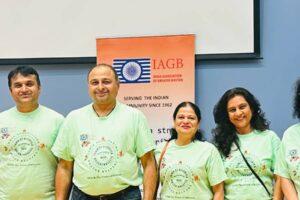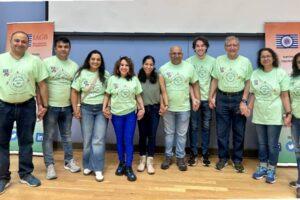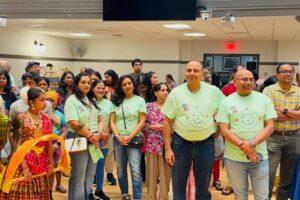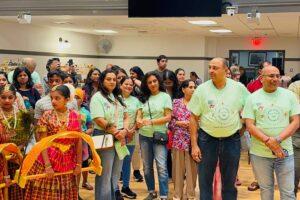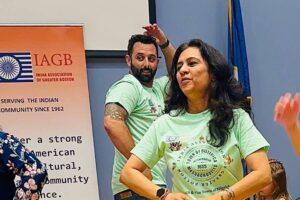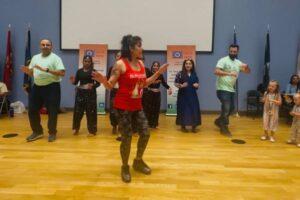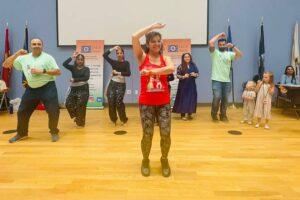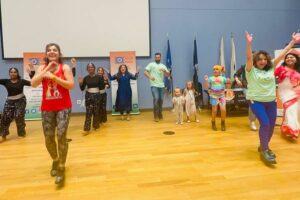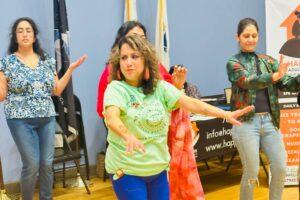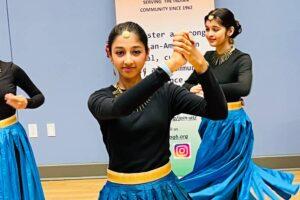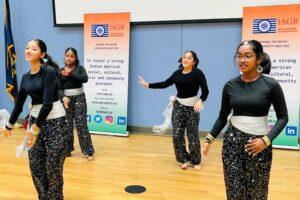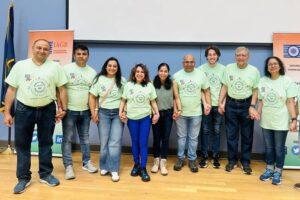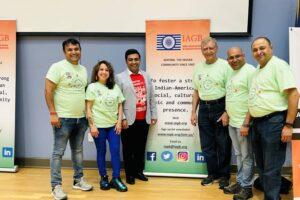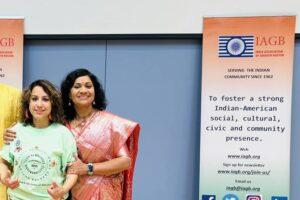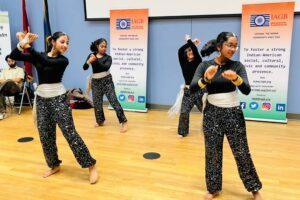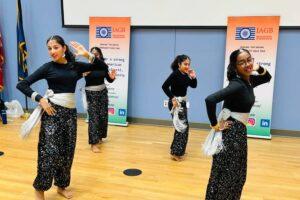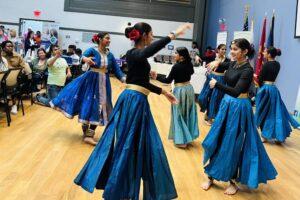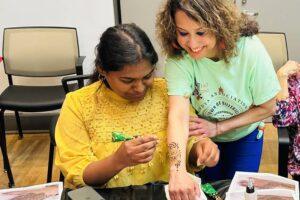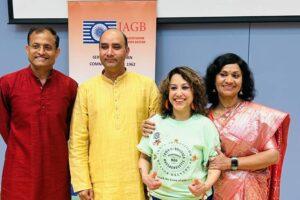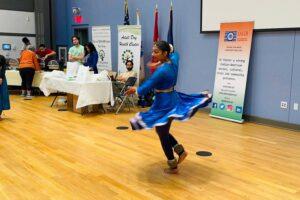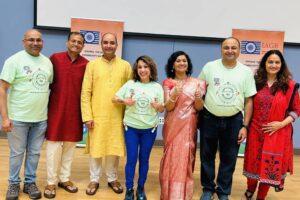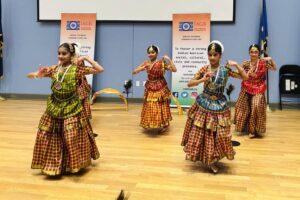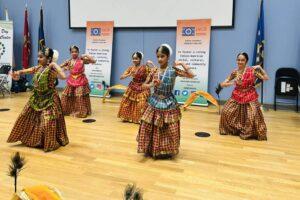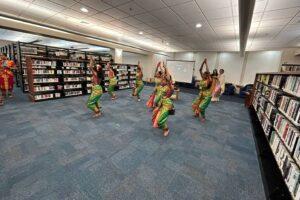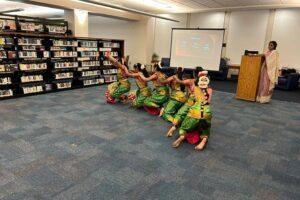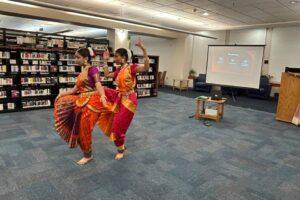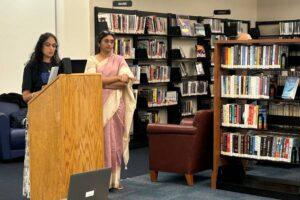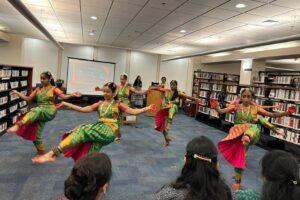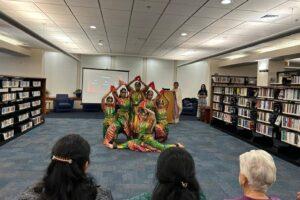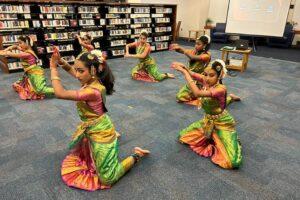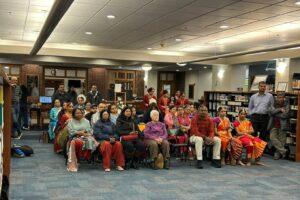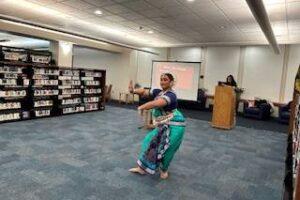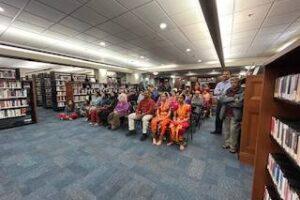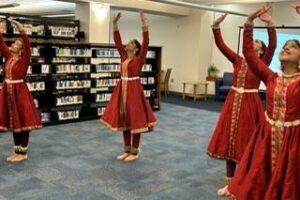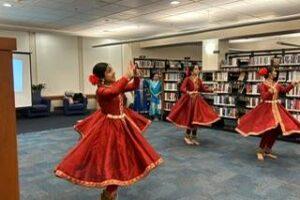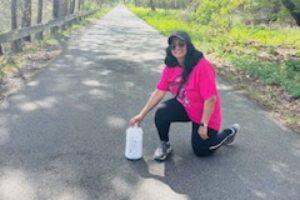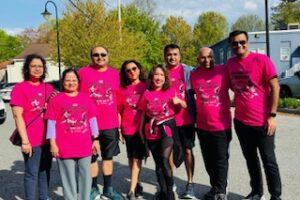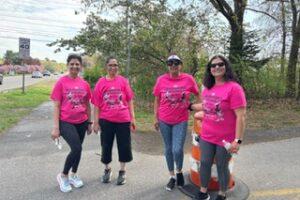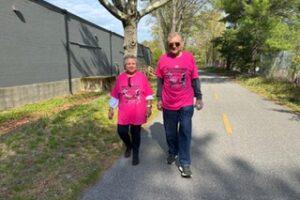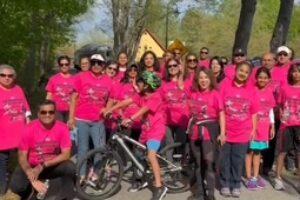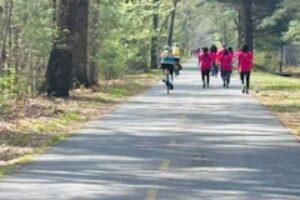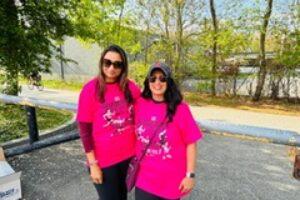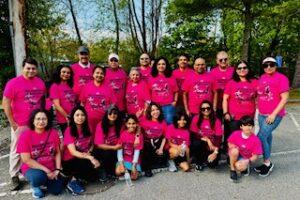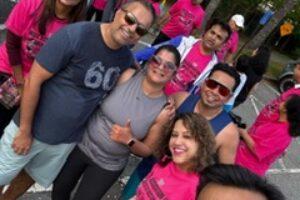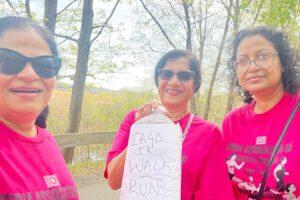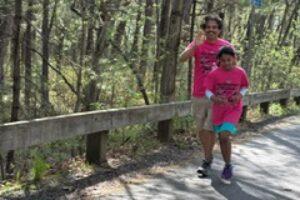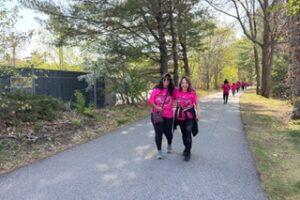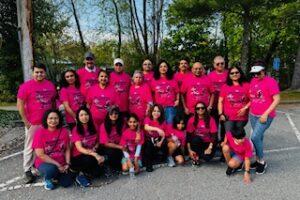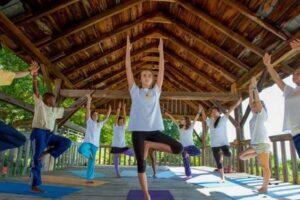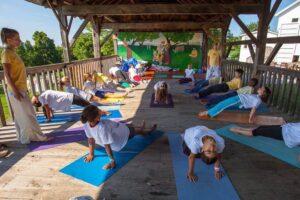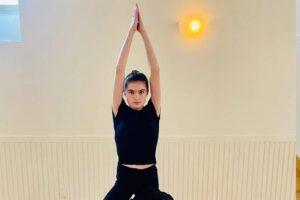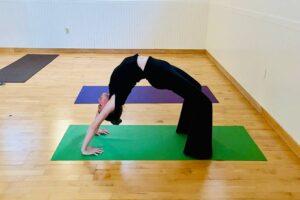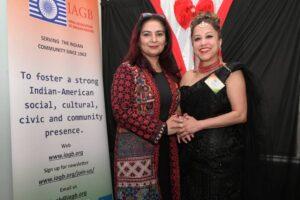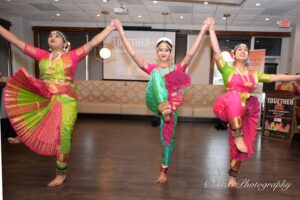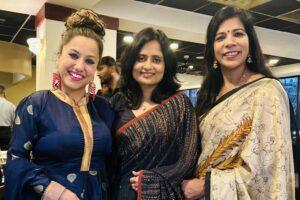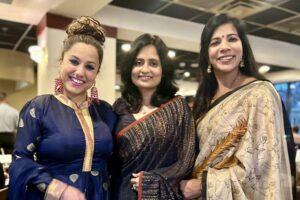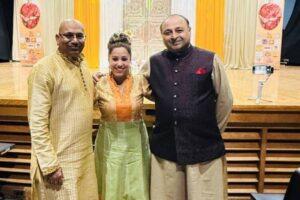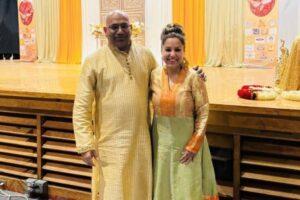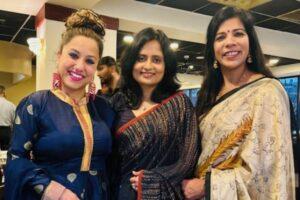Events Recap
🌟 Thank You for Making the IAGB Seniors Expo & Cultural Exchange 2025 a Stellar Success! 🌟
The India Association of Greater Boston (IAGB), in proud collaboration with the Town of Billerica, extends heartfelt gratitude to our Silver Sponsor OmniStarr and Core Care Clinic, our Food Partner Peppino’s Dosa, every performer, individual, and community member who made the New England Seniors Expo & Cultural Exchange 2025 such an unforgettable celebration of culture, connection, and care.
Held indoors at Billerica Town Hall due to forecasted rain, the event was bursting with energy, warmth, and unity—from seniors and caregivers to families, performers, and volunteers. What made it even more special was our alignment with the Billerica 250th Craft Fair, which amplified the reach, energy, and spirit of community all around us.
✨ Some of the highlights that made the day truly magical:
- Free health check-ups by compassionate medical professionals
- Delicious Indian & American fare, featuring the ever-popular Peppino’s Dosa
- Crafts, henna, and cultural treasures from our local vendors
- Foot tapping live music by Mamata Banerjee & team, and mesmerizing group dance performances led by Urmi Samadar & Siya Setty, Preethi Ramesh, and Rishika Garg that honored traditions and built new bridges
- A joyful Bollywood flash mob conducted by Shikha Vashishtha, where generations danced side by side
- And the presence of the thoughtful leaders of Billerica, Robert Maynard, Director of Administrative Services, Hemali Shah, Director of Billerica Council on Ageing, Diana Saunders, Treasurer – Billerica 250th Committee, Chris Sennott, Chair – Billerica 250th Committee, reinforcing the message that diversity is not only welcomed but celebrated!!!
Note from IAGB President Tanu Phoenix:
“When local leadership stands beside community members in moments like these, it strengthens the very fabric of who we are together. more than a celebration. This event was not just to showcase culture, or to provide services, or to enjoy performances. We gathered to honor connection, inclusivity, and shared humanity – to say, boldly and joyfully, that every voice matters, every culture belongs, and every generation contributes to the fabric of who we are. As the President of IAGB, and also as a proud resident of Billerica, it fills me with gratitude to see our seniors, their caregivers, their families, and friends from every background come together in a spirit of learning, laughter, and love.”
IAGB Executive Committee gives a shout-out & a BIG THANK YOU to our partners at the Town of Billerica, our sponsors, performers, vendors, volunteers, and all who attended. You made this day one for the books!
Here’s to many more events that uplift, connect, and inspire. 💛
Nrityakala, Dances of India, at the Billerica Public Library, MA IAGB’s Discover India Series
It was such a pleasure for IAGB to have conducted this event at the beautiful Billerica Public Library on Thursday May 22, as we celebrated something truly special — a vibrant cultural journey through the Dances of India, as part of our Discover India Series, curated by IAGB.
The event was a reflection of IAGB’s enduring commitment to sharing, celebrating, and educating through culture.
As we welcome spring, a season of renewal, energy, and light, there’s no better time to explore the rich tapestry of India’s classical, folk, and contemporary dance forms. Indian dance is not just about movement; it is storytelling, spirituality, celebration, and community expression, passed down through generations, yet alive with new meaning every time it’s performed.
But the evening is about more than dance. It was part of a broader initiative called the Discover India Series, a program that we, at IAGB, have developed and presented for over a decade across libraries throughout New England. This unique series was born from curiosity, from questions like:
- What makes Indian festivals so colorful?
- Why are Indian weaves globally admired?
- How does India balance tradition with technology?
- What’s the story behind those intricate henna designs?
And so, we answered those questions by creating engaging, educational, and accessible programming for everyone, whether you are discovering India for the first time or reconnecting with your roots.
The goal was simple: To bring communities together through stories, culture, and shared experiences, whether it’s through food, music, language, or, like the Thursday night, dance.
We were especially excited because there was something magical about seeing a library, a space for learning, become a stage for culture. This beautiful collaboration between IAGB and Billerica Public Library reflected everything that makes this country special: diversity, inclusion, and the celebration of heritage, not in silos, but together.
We are proud to be Indian, and equally proud and deeply grateful to call the United States of America our home and call ourselves Indian American, where cultures don’t just coexist, they thrive and enrich each other.
Tanu Phoenix, IAGB President says…
I want to extend a special thank you to the library leadership and staff for believing in this vision and making this program possible. I also encourage other libraries and community organizations to consider hosting their own Discover India sessions. We offer a wide range of topics and formats, tailored to your interests.
Let’s continue to explore, exchange, and celebrate. And let’s remember that every time we do, we build bridges of understanding, one story, one dance, one experience at a time.
I want to extend my heartfelt thanks to Urmi Samaddar for the stunning Kathak presentation she anchored, and to Preethi Ramesh for the Bharatnatyam, Mohiniatyam and Kuchipudi presentation at the “Nrityakala – Dances of India” event at the Billerica Public Library.
The presentation was not just a display of technical brilliance — it was storytelling in motion, infused with grace, expression, and a deep connection to tradition.
Urmi and her beautiful dancers transformed the library into a living, breathing space of heritage and expression, and left a lasting impression on everyone present. We are truly grateful for their time, dedication, and artistry.
Preethi Ramesh’s classical dance ensemble presentation was equally captivating — a powerful blend of geometry and grace, storytelling and spirituality. Every gesture, every movement held meaning, and it was a privilege to witness her artistry through her poised, expressive dancers.
Medha Pal’s performance brought the lyrical elegance and spiritual depth of Odissi to life. Intensively trained by her mother, Mouli Pal, founder of Upasana Odissi Inc., and mentored by renowned Odissi exponent Nandini Ghoshal from India, Medha’s presentation was a true gift, adding grace, power, and promise to the evening’s depiction of ‘Nrityakala’.
Her presence on our stage was a true gift, adding grace, power, and promise to the evening’s celebration.
Together, these remarkable artists brought alive the spirit and depth of India’s classical dance heritage, transforming the library into a sacred space of culture, beauty, and connection. They reminded us all why dance is not just performance, but a living tradition that speaks across generations and borders.
IAGB 5K Walk/Run for Voice & Vision
Saturday May 3rd! What a MORNING!
Grateful. Energized. Inspired.
IAGB 5K Walk/Run for Voice & Vision was more than just a community event — it was a celebration of purpose, resilience, and unity.
We came together to support two incredible causes:
- Saheli Boston, empowering survivors of domestic violence
- Vision-Aid, uplifting and enabling the visually impaired
Through your participation and donations, we raised critical funds that will go directly toward the life-changing work these organizations do every day.
A heartfelt thank you to our generous sponsors:
- Sunrise Adult Foster Care
- Cloudleap
Your support helped bring this vision to life!
To our amazing walkers, runners, volunteers, and supporters — thank you for showing up with heart and purpose. Your energy turned this walk into a powerful stride for change.
Special gratitude to the leaders Neelam Wali (Saheli) and Lalit Sudan (Vision Aid) along with Ram, Revathy, Monica, Bharti & Sonal from Vision-Aid who joined us in person and stood with us, reinforcing our shared mission.
Together, we raised our voices, extended our vision, and walked for a better tomorrow.
With deep appreciation,
Team IAGB
#IAGB5K #VoiceAndVision #SaheliBoston #VisionAid #WalkForACause #CommunityStrong #GratitudeInAction #EmpowermentThroughUnity

